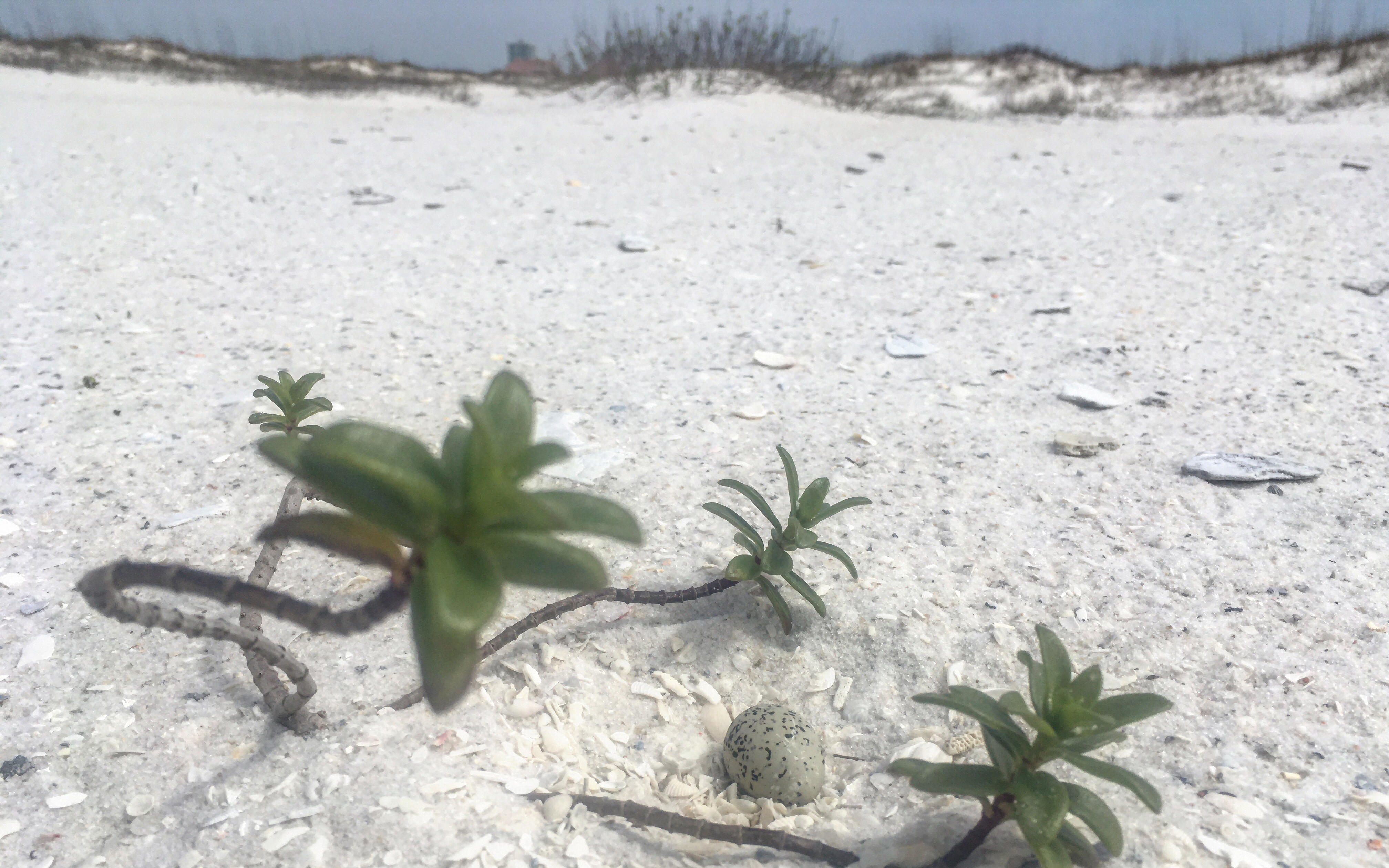News Release

NPS Photo
|
Subscribe
|
Contact: Brent Everitt, 850-934-2600
Gulf Breeze, Fla. – Yesterday, National Park Service biologists discovered the first shorebird nests of the season. Visitors and locals can show their support for shorebird chicks and help remind others to slow down to 25 mph by proudly displaying the Gulf Islands Chick Magnet. Beginning Thursday, March 12, visitors may pick up pick up their free chick magnet at the Fort Pickens & Perdido Key Entrance Stations, Fort Pickens Discovery Center, and park headquarters at Naval Live Oaks Area.
Each year, beginning in February/March and ending in late summer, the seashore provides critical habitat for several species of ground nesting shorebirds including least terns, snowy plovers, wilson’s plovers, and black skimmers. Least terns come from as far away as Central and South America to raise their young on these beaches.
Adult birds and their tiny chicks are sometimes struck by vehicles as they look for food near roadways. By observing posted speed limits and watching carefully for birds flying across or feeding along the roadway, you can help to protect the nesting colonies.
In order to decrease the number of road kills, posted speed limits along Hwy. 399 will be temporarily reduced to 25 mph in the next month. The reduced speed limit is just one element of the park’s efforts to reduce speeding including speed bumps and enhance enforcement along the roadway. By September, nesting is complete and normal use of the roads will resume.
Human intrusion into the nesting closures causes birds to take flight, leaving their nests vulnerable to heat and predators. Adult birds will often dive at intruders in an effort to drive them away from the colony. Alarmed birds may then fly low across the road and into the paths of oncoming vehicles. Bicyclists, walkers, and joggers are encouraged to be aware of bird behaviors along the roadways near posted nesting areas.
“With the help of our community and those who enjoy the national seashore every day, we can ensure these nesting shorebirds have the best opportunity to welcome and fledge their next generation,” said Superintendent Dan Brown. Park staff will monitor beaches for nesting activity and close areas as needed.
Closed areas represent a very small percentage of the seashore and park officials request that visitors divert activities to other areas. If visitors find themselves besieged by birds, it means that you are near an unmarked nesting area or young chicks. Please leave the area by back-tracking your steps - the eggs are very small, well camouflaged, and hard to see.
About Gulf Islands National Seashore: Created in 1971, the national seashore stretches 160 miles along the northern coast of the Gulf of Mexico in Florida and Mississippi, and includes barrier islands, maritime forests, historic forts, bayous, and marine habitat. Visit us at www.nps.gov/guis, on Facebook www.facebook.com/GulfIslandsNPS, Twitter www.twitter.com/GulfIslandsNPS, and Instagram www.Instagram.com/GulfIslandsNPS.
About the National Park Service: More than 20,000 National Park Service employees care for America's 417 national parks and work with communities across the nation to help preserve local history and create close-to-home recreational opportunities. Visit us at www.nps.gov, on Facebook www.facebook.com/nationalparkservice and Twitter www.twitter.com/natlparkservice.
~NPS~
Last updated: March 10, 2020
